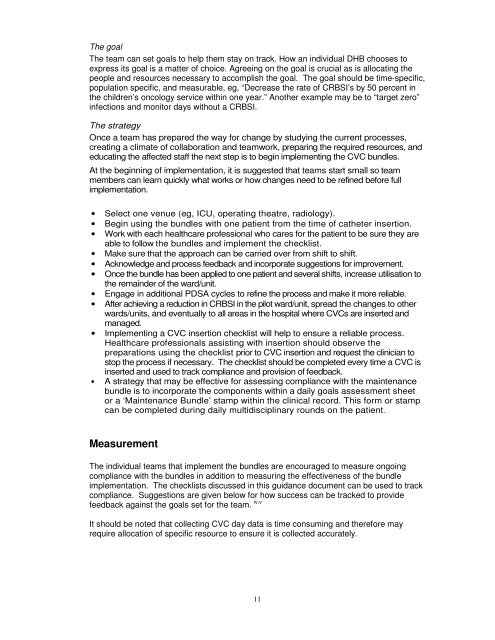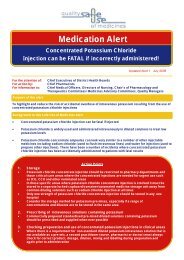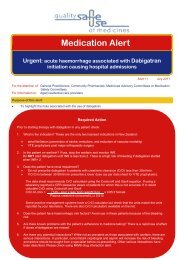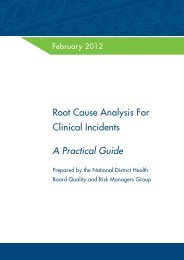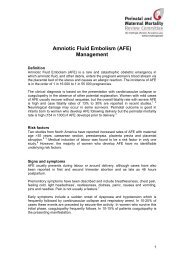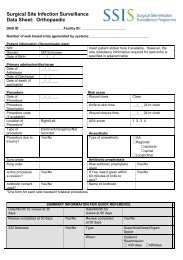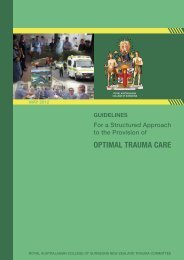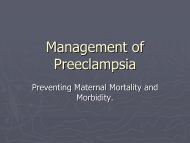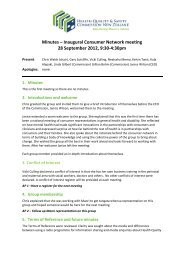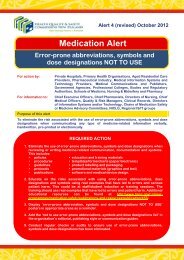Catheter related bloodstream infections guidance - Hqsc.govt.nz
Catheter related bloodstream infections guidance - Hqsc.govt.nz
Catheter related bloodstream infections guidance - Hqsc.govt.nz
You also want an ePaper? Increase the reach of your titles
YUMPU automatically turns print PDFs into web optimized ePapers that Google loves.
The goalThe team can set goals to help them stay on track. How an individual DHB chooses toexpress its goal is a matter of choice. Agreeing on the goal is crucial as is allocating thepeople and resources necessary to accomplish the goal. The goal should be time-specific,population specific, and measurable, eg, “Decrease the rate of CRBSI’s by 50 percent inthe children’s oncology service within one year.” Another example may be to “target zero”<strong>infections</strong> and monitor days without a CRBSI.The strategyOnce a team has prepared the way for change by studying the current processes,creating a climate of collaboration and teamwork, preparing the required resources, andeducating the affected staff the next step is to begin implementing the CVC bundles.At the beginning of implementation, it is suggested that teams start small so teammembers can learn quickly what works or how changes need to be refined before fullimplementation.• Select one venue (eg, ICU, operating theatre, radiology).• Begin using the bundles with one patient from the time of catheter insertion.• Work with each healthcare professional who cares for the patient to be sure they areable to follow the bundles and implement the checklist.• Make sure that the approach can be carried over from shift to shift.• Acknowledge and process feedback and incorporate suggestions for improvement.• Once the bundle has been applied to one patient and several shifts, increase utilisation tothe remainder of the ward/unit.• Engage in additional PDSA cycles to refine the process and make it more reliable.• After achieving a reduction in CRBSI in the pilot ward/unit, spread the changes to otherwards/units, and eventually to all areas in the hospital where CVCs are inserted andmanaged.• Implementing a CVC insertion checklist will help to ensure a reliable process.Healthcare professionals assisting with insertion should observe thepreparations using the checklist prior to CVC insertion and request the clinician tostop the process if necessary. The checklist should be completed every time a CVC isinserted and used to track compliance and provision of feedback.• A strategy that may be effective for assessing compliance with the maintenancebundle is to incorporate the components within a daily goals assessment sheetor a ‘Maintenance Bundle’ stamp within the clinical record. This form or stampcan be completed during daily multidisciplinary rounds on the patient.MeasurementThe individual teams that implement the bundles are encouraged to measure ongoingcompliance with the bundles in addition to measuring the effectiveness of the bundleimplementation. The checklists discussed in this <strong>guidance</strong> document can be used to trackcompliance. Suggestions are given below for how success can be tracked to providefeedback against the goals set for the team. iv,vIt should be noted that collecting CVC day data is time consuming and therefore mayrequire allocation of specific resource to ensure it is collected accurately.11


